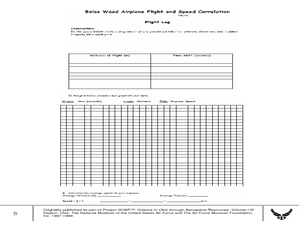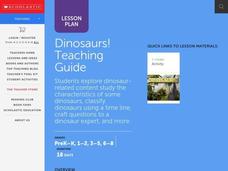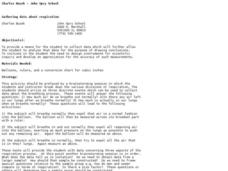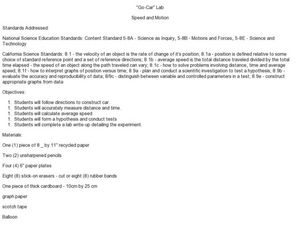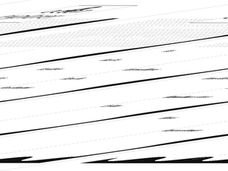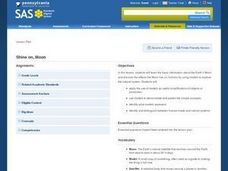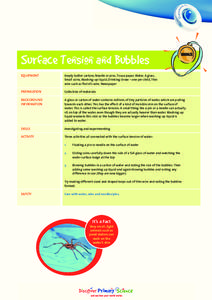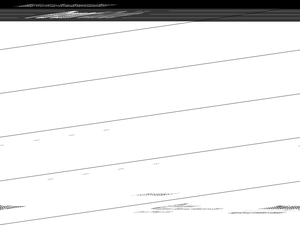Curated OER
A Visual History: Industry, Society, and Social Mobility in Hartford
Eleventh graders examine the industrialization of Hartford. In this American History lesson, 11th graders analyze pictures in Hartford. Students participate in a gallery walk of artifacts.
Curated OER
What Do Parts Do?
Students review the components of the scientific inquiry method. In groups, they identify and describe the components and functions of all of the parts of a plant. Using a diagram, they label the parts of the plant chosen and share...
Curated OER
Balsa Wood Airplane Flight and Speed Correlation
Ninth graders calculate the average speed of their balsa wood airplane. For this physics lesson, 9th graders build their own airplane and make necessary modifications to to make it fly straight. They interpret distance and time graph...
Curated OER
Dinosaurs
Students will develop goals for inquiry. They will also improve content area reading and research skills. The context of studying dinosaurs will help learners to distinguish from organisms that live presently and those from the past...
Curated OER
Parachutes: What Affects a Parachute
Students create a simple paper parachute. For this parachute design lesson, students examine the effects of the wind and make napkin parachutes.
Curated OER
"Teaching with Material Objects" - Horn-book
Students explore language arts by creating Venn Diagrams. In this reading materials lesson, students examine a horn-book and create a hypothesis about how to use it and where they derived from. Students compare their horn-book to a text...
Curated OER
I Wood if I Could
Tenth graders investigate the process of how specific products are made from trees. For this chemistry instructional activity, groups of students must choose among ice cream, bubble gum, paper, toothpaste and lipstick. They research,...
Curated OER
Gathering Data About Respiration
Students engage in an experiment that tests how much air we breathe in and out during the respiration process. For this respiration lesson, students blow a typical breath's amount of air into a balloon. They use a ruler to measure the...
Curated OER
Tree Hunt
Students identify the common trees of Iowa and make observations while creating a key. In this tree hunt lesson, students write a letter to the Iowa Department of Natural Resources to receive a pamphlet of Common Trees of Iowa. Students...
Curated OER
"Go-Car" Lab
Young scholars construct a car based on directions given. In this physics lesson, students calculate average speed using distance and time information. They collect data and create a graph of distance vs. time.
Curated OER
Mystery in History
Fifth graders research United States history by exploring Roanoke Island. In this colony lesson, 5th graders identify North Carolina geography and the lost colony of Roanoke Island. Students complete a worksheet displaying the facts and...
Curated OER
What is a Karst
Students investigate landforms by holding a class experiment. In this topography lesson, students define the word "karst" and discover why sinkholes are created on the surface of the Earth by completing worksheets. Students create a...
Curated OER
How Does Light Travel
Seventh graders design an experiment to determine how light travels. For this physics lesson, 7th graders collect and analyze data. They formulate a conclusion and share results with the class.
Curated OER
Planning: To Get Enough Money for Food
Students investigate methods that families use for planning meals and budgeting for them. In this nutrition lesson plan, students complete activities that require them to determine how much it costs to feed children at different ages....
Curated OER
Go Fish!
Students practice their reading comprehension by participating in a fictional fishing exercise. In this children's literature lesson, students read One Fish, Two Fish, Red Fish, Blue Fish by Dr. Seuss, and discuss the characteristics of...
Curated OER
Mass vs. Weight
Students explore physical science by conducting a measurement experiment. In this mass lesson, students identify the differences between mass and weight and define a list of other vocabulary terms. Students utilize electronic scales and...
Curated OER
Shine On, Moon
Students explore space science by conducting an experiment in class. In this Moon lesson, students define a list of space science vocabulary and read the book The Moon. Students utilize shoeboxes and string to conduct a sunlight...
Curated OER
Surface Tension and Bubbles
Students investigate surface tension and bubbles. In this scientific inquiry lesson plan, students explore how the surface tension of water is able to support tiny objects that actually weigh more than the water as they collect date by...
Curated OER
Density of Liquids
Students explore the density of liquids. In this scientific inquiry lesson plan, students discover the density of water, corn syrup, and cooking oil through an experiment. In addition, students will draw and label pictures of the...
Curated OER
Preservation and the Power of Light
Students identify the effect of light on objects. In this scientific inquiry lesson plan, students use a chart to write a hypothesis about what will happen when colored construction paper is left in sunlight. Students observe and discuss...
Curated OER
Cleaning Pennies
Students observe changes in a penny when it is cleaned. In this scientific inquiry lesson, students use a dixie cup filled with vinegar and salt, and drop the penny into the water. Students observe the changes.
Curated OER
By Golly By Gum
Students identify the different steps in the scientific method. In this inquiry instructional activity, students determine the mass of the gum after chewing it for sometime. They explain what happens to the lost mass.
Curated OER
Beginning Statistical Inquiries into the Scientific Method: Jelly-Side-Down
Students describe what happens when a piece of jellied toast is dropped off a table. From these observations, students pose a question concerning which side of the jellied toast land on the floor.
Curated OER
The Blue Bottle: An Example of Teacher-Guided Inquiry
Learners observe a demonstration in which a bottle containing a colorless solution is mixed, turns blue, then becomes colorless again. They record observations, form and discuss hypotheses, and draw a conclusion based on the evidence.
Other popular searches
- Science Inquiry Lessons
- Chemistry Inquiry Lessons
- Math Inquiry Lessons
- Guided Inquiry Lessons
- Inquiry Lessons on Rocks
- Life Science Inquiry Lessons
- Health Inquiry Lessons
- Drug Inquiry Lessons
- Inquiry Lessons on Plants
- Inquiry Lessons English
- Inquiry Lessons Plants
- Genetics Inquiry Lessons




